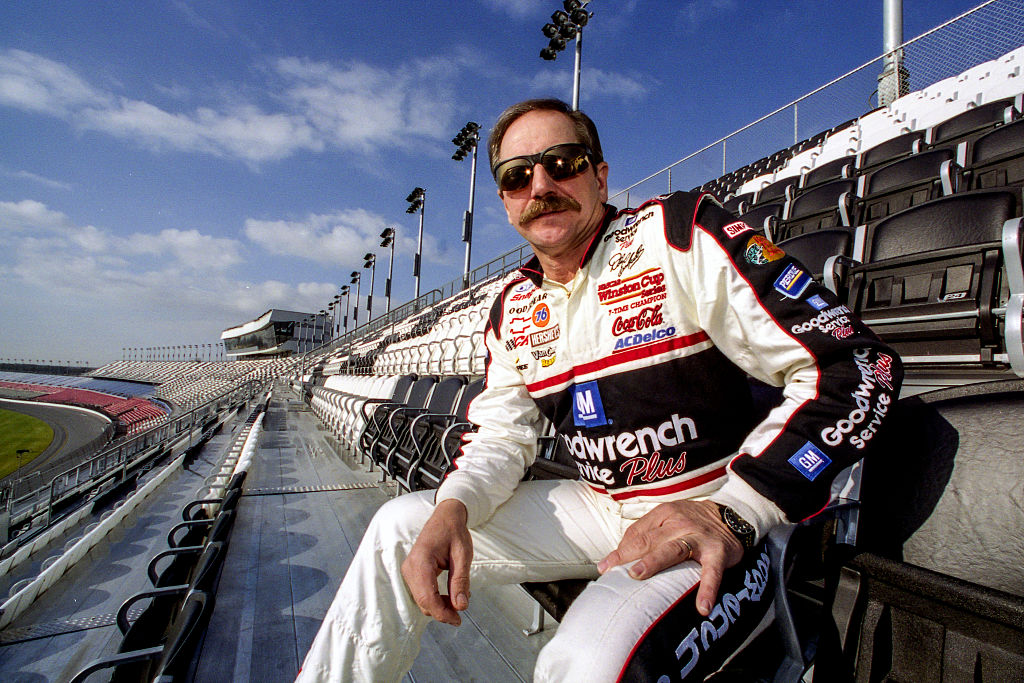
Dale Earnhardt’s Gruesome Death and How It Changed NASCAR Forever
Dale Earnhardt Sr.’s legacy in NASCAR is undeniable. In his stellar 27-year career, he earned 76 Cup Series victories, including the 1998 Daytona 500. More impressively, he won seven Cup Series championships. On February 18, 2001, Earnhardt’s career and life all suddenly came to a tragic end on the last lap of the Daytona 500.
The NASCAR family and sports world were stunned. Arguably, the greatest NASCAR driver to ever race was gone. While Earnhardt’s death sent shockwaves throughout the racing community, it did something far more important—it produced change. That single event took one life, but in the end, saved countless others.
Dale Earnhardt Sr.’s incredible NASCAR career
Dale Earnhardt Sr.’s career is the stuff of legends. That’s because he was one. The legendary driver got his start in 1975 but raced a limited schedule until 1979. That year, Earnhardt won a race at Bristol, claimed four poles, and finished in the top 10 an impressive 17 times, en route to finishing seventh in the points and garnering Rookie of the Year honors.
While Earnhardt made a good showing his first full season on the Cup Series, he took it to an entirely different level in 1980, winning six races and capturing the first of his seven Cup Series championships. The Dale Earnhardt legend was born as he became the first and still the only driver to follow up his Rookie of the Year season with a championship the following year.
It took him five more years to win his next title in 1986, but it was the start of an amazing streak that would see Earnhardt earn six titles in nine years. Earnhardt’s best season came in 1987 when he won a staggering 11 times.
Despite years of sustained success, Earnhardt was always dogged by the question—when would he win the Super Bowl of Stock Car Racing, the Daytona 500? Finally, in 1998, on his 20th attempt, Earnhardt answered the question. It turned out to be his only win that season.
Earnhardt dies instantly on impact during last lap of Daytona 500
In an ironic twist of fate, the one track where victory had eluded Earnhardt for years until he finally conquered it in 1998, would also be the site of his final race and final moments on earth. And incredibly, it would happen on the last lap as he battled his own son and Michael Waltrip, who were both racing Earnhardt-owned cars, to the finish.
With Waltrip and Earnhardt Jr. in front, Dale Sr., Sterling Marlin, and Ken Schrader battled for third. Marlin’s right front tapped the rear of Earnhardt’s No. 3 car, which caused it to wobble, before making a hard right turn into the wall, collecting Schrader in the process. After the rest of the field zipped by, Earnhardt and Schrader’s cars slid down the banking into the infield grass.
Schrader exited his vehicle and quickly scrambled over to check out his friend. He was stunned to see a lifeless Earnhardt, which it would later be revealed had been killed instantly on impact.
The changes resulting from Dale Earnhardt’s death
Dale Earnhardt’s death was determined to be the result of an inadequately restrained head and neck snapping forward when he reportedly hit the wall at a speed calculated between 157-161 mph. The force from the collision exerted on Earnhardt’s body was the equivalent of a vertical drop from a six-story building.
After the accident, most NASCAR teams migrated from traditional five to six-point safety harnesses. NASCAR mandated the use of head-and-neck restraint devices later in 2001. NASCAR also began requiring the use of SAFER barriers at the top touring series race tracks across the country. The soft foam walls move slightly upon impact, dissipate energy, and reduce the force exerted on the driver.
Most significantly, NASCAR developed the Car of Tomorrow (CoT), which incorporated the results from the research conducted in the aftermath of Earnhardt’s death. The CoT design was replaced by the Gen 6 design in 2013 with all of the safety improvements from the CoT incorporated.
The resulting changes have proven to be life-saving. There’s no better evidence of this than Ryan Newman’s terrifying collision, which was eerily reminiscent of Earnhardt’s as it also occurred on the last lap of the 2020 Daytona 500. Newman walked out of the hospital under his own power and holding the hands of his daughters less than 48 hours later. Since the Earnhardt tragedy, NASCAR has not had a single race-related death.
Dale Earnhardt’s legacy in NASCAR will never be forgotten. His achievements while alive were in a league of their own. But it’s the legacy of his death, as painful as it was, that has made the sport safer for the drivers and a better experience for the entire racing community.



